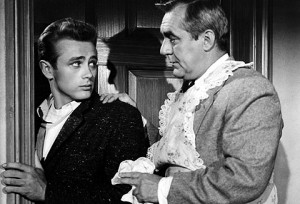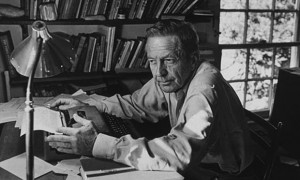Cake Baking with John Cheever
I’m teaching my “Desperate Domesticity” course on the American 1950s, nicknamed “From Cheever to Beaver” by a former student. And I find myself thinking about cookbooks and gender performance as I return to John Cheever’s stories of postwar suburban life. As with fiction-making, artful baking is no piece of cake. And neither was forsaking the era’s recipes for manliness and womanliness.
One of my favorite Cheever stories, “The Wrysons,” first appeared in The New Yorker in 1958. Donald Wryson bakes by night while his unsuspecting wife has atomic dreams. He does not whip up a Betty Crocker cake mix. He creates richly elegant Lady Baltimore cakes that require meticulous labor: beating egg whites for both batter and frosting, chopping fruit and nuts for the filling. Donald began this secret life before his marriage, baking his way out of depression and anxiety:
“Searching desperately for some way to take himself out of this misery, he hit on the idea of baking a Lady Baltimore cake. He went out and bought the ingredients–deeply ashamed of himself–and sifted the flour and chopped the nuts and citron in the kitchen…”
After eating a slice, Donald would hide the remains in the garage, crossing over from feminine to masculine domestic space. He destroys the evidence of his culinary prowess. Unlike the feminized father in Rebel Without a Cause (1955), Donald Wryson kept his aproned identity a secret. Presumably, a baking breadwinner might explode the normative nuclear family.
Or would it? My copy of Betty Crocker’s Picture Cook Book (1950) crosses gender and professional boundaries in the Cakes section, offering women “blueprints” for being “a good ar-cake-techt.” A baking housewife needs proper tools “just as an architect has his slide rule.” She must measure ingredients “as exactly as a carpenter measures lumber for the house” because “cakes are delicately balanced chemical formulas.” If Donald Wryson and Jim Backus literally wore aprons, the postwar housewife figuratively donned a tool belt and lab coat every time she set out to bake that perfect cake. She mixed femme with STEM. But she could bake out in the open.
Karal Ann Marling reminds us that in the 1950s, cakes were “the ultimate in aesthetic fare” as well as expected expressions of womanly love, nurture, and hospitality (As Seen on TV). A fraught endeavor, baking the perfect cake placed tremendous pressures on gender performance–just as it graced the domestic arts. Writing from the closet about the suburban nuclear family, John Cheever distills all these tensions in his artful tale of desperate domesticity. –MB



Comments are currently closed.